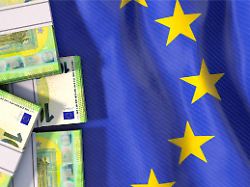The EU’s Corona recovery fund is worth 723 billion euros. Actually, the budgetary control committee of the European Parliament should monitor how the funds are allocated. But he hardly gets any information about the end recipients, says Chairwoman Hohlmeier.
Monika Hohlmeier has a problem. The budget control committee of the European Parliament, which the CSU politician heads, cannot do its job, she says. The focus of the criticism is the lack of transparency in the distribution of subsidies from the Corona reconstruction fund. In times of the pandemic, the EU launched the 723 billion euro fund, which consists of both loans and grants, to make the member states more crisis-proof by financing various projects. In return, the EU members must initiate reforms, especially in the digital and ecological areas.
Hohlmeier demands information from the federal states and the EU Commission as to where exactly the money is being invested. Despite several inquiries, there is still no satisfactory answer. “The Committee on Budgetary Control has not received a complete overview of all or at least significant projects from any Member State,” she says.
The EU states are actually obliged to provide the committee with a list of the 100 most important final recipients twice a year. A total of 14 countries have already complied with this obligation. However, Hohlmeier complains that these lists, on-line are publicly visible and not very illuminating.
Italy wanted to subsidize football stadiums
In the database, Austria states, for example, that it is awarding more than 78 million from the fund to the Federal Ministry of Education, Science and Research. Around 73 million of these are to be used to provide students with digital devices. The website does not reveal which tenders are awarded in this context, which company supplies the devices and who ultimately receives the money.
In many cases, parliamentarians don’t know much more about the whereabouts of the subsidies either. Hohlmeier contacted the Commission several times for more detailed information. Without success. For example, Spain has planned funds for the healthcare system, says the CSU politician. “If we in the EU Parliament would like to know what the funds were actually used for, we receive incomplete individual examples that do not allow any conclusions to be drawn about the allocation of the funds as a whole,” said Hohlmeier. For example, it is not possible to see which hospitals have received which type of equipment and at what price. Nor can the committee check whether the funds have been spent fairly and impartially.
In Italy, which, like Spain, is one of the biggest beneficiaries of the recovery fund, a particularly illustrious example made it clear how money could be misappropriated if the allocation is not controlled. Rome wanted to subsidize the construction and renovation of two football stadiums. For a stadium in Venice, 93 million euros should flow, for another one in Florence 55 million. The Commission finally intervened and refused to allow the fund to finance the projects. The mayor of Florence reacted defiantly, claiming that the funds had already been approved.
Information “only available under great pressure”
Hohlmeier is convinced that the lack of staff means that the Italian authorities are overwhelmed by the need to “access funds from the reconstruction fund in parallel with the cohesion funds and to spend them on projects that really make sense,” as she says. The payment of various tranches to Italy has been delayed accordingly. Reports suggest that the Italian government is reducing the powers of its Court of Auditors after criticizing the delays in using the subsidies.
Confronted with Hohlmeier’s criticism, a commission spokeswoman explained to ntv.de that the member states are obliged to “keep records of the end recipients of special facility funds”. However, they would only have to disclose this data if requested by the Commission, the European Court of Auditors, the European Anti-Fraud Office or the European Public Prosecutor’s Office.
In fact, countries are not breaking EU law by only providing vague information to Parliament. The Commission makes the data available to the Committee on Budgetary Control if they request it, the spokeswoman said. Hohlmeier vehemently denies this. Information is “only available gradually and under great pressure,” she says.
Map shows projects only as examples
The Commission emphasizes that a so-called scoreboard as well as a digital one Map provide a good overview of the allocation of funds. The Committee, in turn, criticizes that the projects shown there are selected purely as examples, which the Commission concedes. The graphic is based on publicly available data, the spokeswoman said. “The map is a living project and will be updated regularly,” she adds.
Accordingly, the map only provides incomplete information. Sometimes the links to websites that describe the projects in detail are missing, in other cases the links lead nowhere. So it happens that a program is only rudimentarily described in a few sentences. This is not a working basis for Hohlmeier’s committee, which is supposed to support the Commission in maintaining budgetary discipline.
